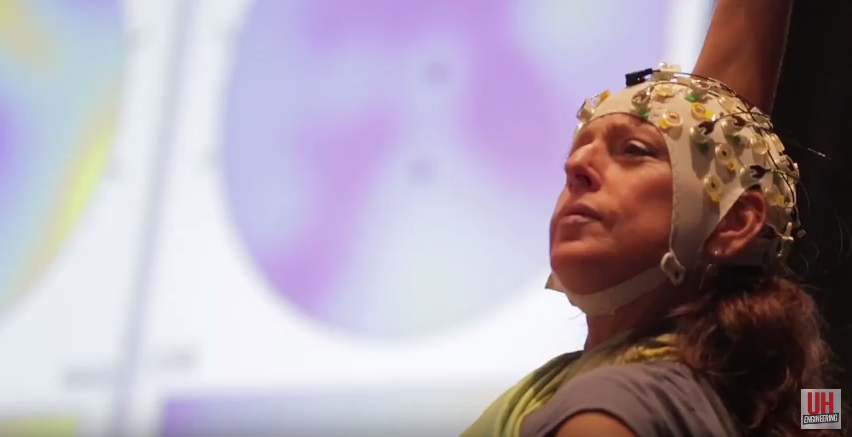TDPS Dance faculty at Brain on Art conference in Cancún
August 31, 2016

In July 2016, TDPS Dance Professors Karen Bradley and Miriam Phillips attended and presented at Your Brain on Art: International Conference on Mobile Brain-Body Imaging and the Neuroscience of Art, Innovation and Creativity in Cancún, Mexico.
In July 2016, TDPS Dance Professors Karen Bradley and Miriam Phillips attended and presented at Your Brain on Art: International Conference on Mobile Brain-Body Imaging and the Neuroscience of Art, Innovation and Creativity in Cancún, Mexico.

Professor Miriam Phillips dances flamenco in mobile EEG cap (photo still from University of Houston video)
The cutting edge conference was a meeting of minds of artists and scientists that brought together “thought leaders, practitioners and innovators working at the intersection of the arts, sciences, engineering, technology, medicine, and education” (from the conference website). The participants discussed the development of transdisciplinary approaches to studying the brain and art, especially in the realm of understanding creativity, aesthetics, emotion and intention, art therapy, and brain-body technologies. This collaborative research contributes to the study of problem-solving, and how the arts create meaning through aesthetic problem-solving.


Images from video by Jose M. Azorin, Universidad Miguel Hernández de Elche, Spain
On Monday, July 25, Phillips and Bradley demonstrated the exploration of the visual and auditory neurofeedback loop involved in brain dynamics while dancing. Phillips performed improvisational flamenco dance while wearing a mobile EEG cap (MoBI), in order to show the evolution of brain waves in action and context during a dance performance.
(Professor Phillips starting at 1:24)
The following day, Professor Bradley presented on a panel that explored the cognitive, medical, and pedagogical applications that arise from the combined study of creative arts and neuroscience. In particular, how does such research promote an advanced understanding of social cognition, health, and education? How does this research contribute to the development of STEAM in education, adding the Arts to the focus on Science, Technology, Engineering, and Mathematics?
Bradley and Phillips participated in and contributed to innovative research at the intersection of science and the arts, using state-of-the-art equipment to demonstrate the neuroscience behind dance and other creative practices.
The open access journal Frontiers in Human Neuroscience will publish selected presentations from the conference in a special issue, coming soon.
by Kate Spanos

